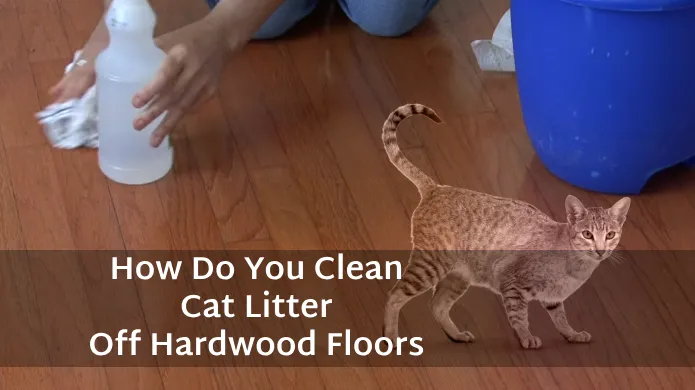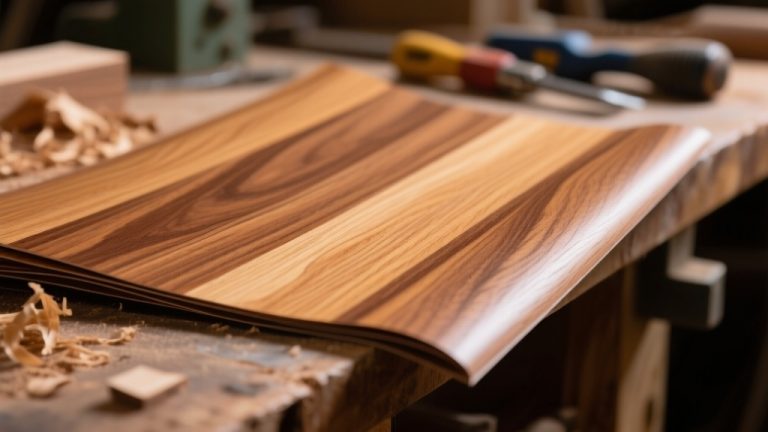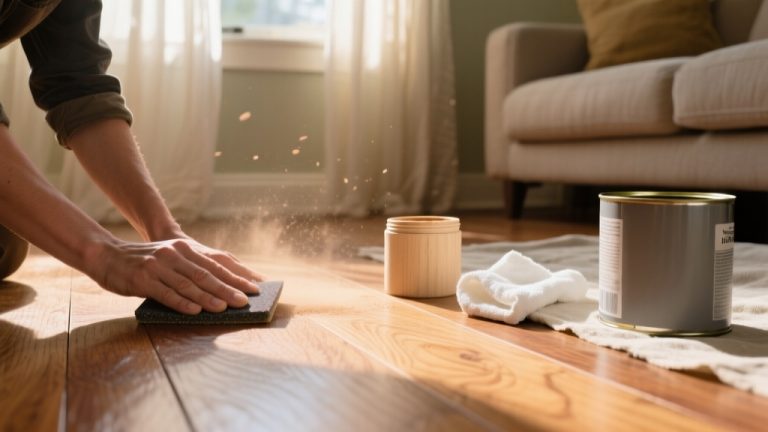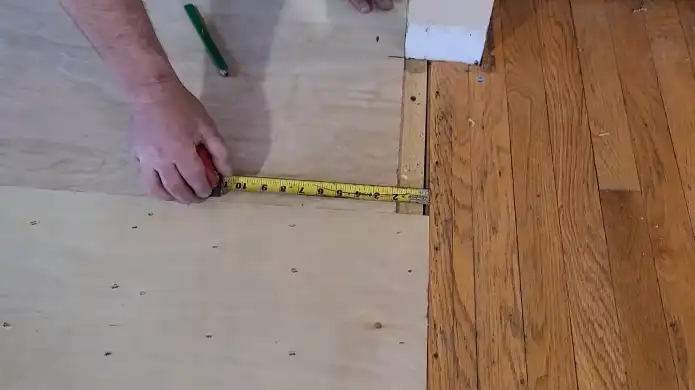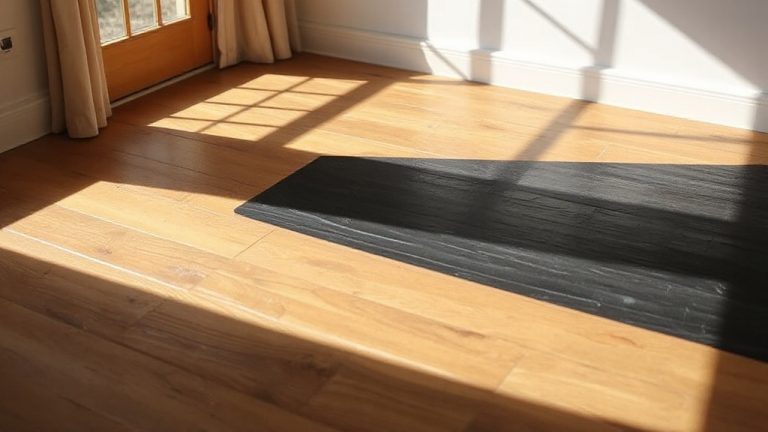You can expect hardwood floors to last from 30 to over 100 years, depending on the wood species, installation quality, and how well you maintain them.
Solid hardwood offers more refinishing options but requires careful humidity control, while engineered hardwood resists moisture better. Proper installation, regular cleaning, moisture control, and timely refinishing prevent damage and extend longevity.
Understanding these factors will help you maximize your floor’s durability and value for decades to come.
Key Takeaways
- Hardwood floors typically last between 30 to 100 years with proper care, installation, and maintenance.
- Solid hardwood offers longer lifespan and more refinishing options than engineered hardwood.
- High-quality wood species like oak or maple improve durability and resistance to wear.
- Regular maintenance, humidity control, and refinishing significantly extend hardwood floor longevity.
- Professional installation and subfloor preparation prevent warping and structural damage over time.
Typical Lifespan of Hardwood Flooring
Although hardwood floors are known for their durability, their typical lifespan ranges widely from 30 to 100 years, depending on factors like maintenance, environmental conditions, and material quality.
Hardwood floors can last 30 to 100 years, influenced by care, environment, and material quality.
You’ll find that high-quality hardwood, when properly installed following the manufacturer’s guidelines, markedly extends longevity. Professional installation is crucial to prevent issues such as cupping and warping, which can shorten the floor’s lifespan.
Proper installation also includes acclimating the wood to room conditions before laying it down to maximize durability and lifespan. Environmental factors such as moisture levels directly influence the floor’s structural integrity, so controlling humidity is essential.
Consistent maintenance, including regular cleaning and timely refinishing, prevents surface wear and damage, preserving the wood’s appearance and strength. Using appropriate cleaning products and protecting floors from scratches with rugs or mats minimizes wear.
Ultimately, well-maintained hardwood floors not only last decades but can serve as a lasting legacy, combining durability with timeless aesthetic appeal in your home.
Differences Between Solid and Engineered Hardwood
When choosing between solid and engineered hardwood, understanding their fundamental construction differences is crucial. Solid hardwood consists of a single, thick wood piece, typically around 3/4 inch, providing superior durability and multiple refinishing opportunities.
Engineered hardwood features a veneer layer bonded to a plywood core, enhancing moisture resistance and dimensional stability, especially in humid environments. While both share similar top-surface appearances, engineered floors range from 3/8 to 3/4 inch thickness and can only be sanded once.
Solid hardwood is more prone to warping due to moisture changes, but it offers a longer lifespan and value retention. Engineered hardwood is more affordable and environmentally friendly due to reduced wood usage, but it sacrifices refinishing potential.
Your choice hinges on balancing installation environment, budget, and long-term maintenance expectations. It is also important to avoid steam mops and excessive moisture during cleaning to preserve the integrity of both types of hardwood floors.
Impact of Wood Type on Durability
Because wood type fundamentally determines a hardwood floor’s durability, selecting the appropriate species is critical for withstanding wear and tear. The Janka Hardness Scale quantifies a wood’s resistance to dents, higher values mean greater durability.
You’ll want to contemplate:
- Domestic Hardwoods: Hickory (1820 Janka) tops durability among domestic species, ideal for high-traffic zones. Hard maple (1450) offers excellent dent resistance with a tighter grain than oak. Regular maintenance methods help preserve the wood’s appearance and lifespan.
- Wear Patterns: Woods like hickory with dramatic grains mask scratches better, extending the floor’s visual lifespan. Softer woods like walnut (1010) show wear sooner.
- Exotic Options: Brazilian Walnut (Ipe, 3680) and Brazilian Cherry (Jatoba, 2350) far exceed domestic hardness, resisting dents and reducing maintenance frequency. Though they come at a higher cost, they offer superior durability.
Additionally, the finish applied to the wood plays a significant role in protecting the surface and enhancing its overall durability and resistance. Choosing the right wood type directly impacts your floor’s longevity in active environments.
Role of Installation Quality in Floor Longevity
The quality of your hardwood floor installation directly influences its stability and lifespan. Choosing nail-down or glue-down methods over floating installations markedly enhances structural integrity and resistance to environmental changes.
Proper subfloor preparation, ensuring it’s clean, level, and dry, is critical to prevent plank warping, gaps, and premature loosening. Moisture barriers and underlayments must be correctly applied to avoid swelling and cupping.
Additionally, selecting the appropriate wood species and finish can further extend hardwood lifespan. Understanding the hardwood flooring types helps in choosing the best wood suited for your environment and style.
Professional installers bring expertise in handling these essential details, ensuring adherence to manufacturer guidelines. A securely installed floor not only resists movement and damage but also facilitates easier refinishing and repairs.
Conversely, poor installation often leads to costly early replacements, compromised aesthetics, and diminished structural performance. Prioritize installation quality to maximize your hardwood floor’s durability and long-term value.
Maintenance Practices That Extend Hardwood Life
Although hardwood floors are renowned for their durability, consistent maintenance practices play a critical role in extending their lifespan and preserving their aesthetic appeal. You need to focus on these key areas:
- Regular Cleaning: Sweep daily with a soft-bristle broom or microfiber dust mop to eliminate abrasive particles. Mop weekly using a wood floor cleaner and a damp microfiber mop, avoiding harsh chemicals and excess water. Promptly clean spills with a dry or slightly damp cloth to prevent moisture damage. Proper maintenance also prolongs the lifetime of your hardwood floors, protecting your investment.
- Moisture Control: Maintain indoor humidity between 35% and 55% using humidifiers or dehumidifiers seasonally. Place mats at entrances to capture moisture and debris, wiping up tracked-in moisture immediately.
- Physical Protection: Use felt pads under furniture, area rugs in high-traffic zones, and trim pet nails regularly. Avoid dragging heavy objects to prevent scratches and dents.
Environmental and Usage Factors Affecting Durability
When you consider the lifespan of hardwood floors, environmental and usage factors considerably influence their durability. Maintaining humidity levels between 35-55% prevents excessive wood expansion or contraction, reducing the risks of warping or cracking.
Proper acclimatization before installation ensures the wood adapts to local temperature and moisture conditions. Using moisture barriers during installation protects floors from subfloor moisture intrusion, especially in humid regions.
High foot traffic accelerates surface wear, while heavy furniture and pet activity increase dents and scratches. Incorrect cleaning methods can degrade the finish and compromise wood integrity. Employing furniture pads under heavy items helps distribute weight and prevent dents.
Additionally, subfloor condition affects floor stability and moisture resistance. Selecting hardwood species like oak or maple, known for superior durability and moisture tolerance, further enhances lifespan.
The Janka Hardness Scale measures how resistant a wood species is to denting, providing valuable insight into durability. Understanding and controlling these variables ensures your hardwood floors perform best over time.
Refinishing Hardwood Floors: When and Why
You’ll know it’s time to refinish when deep scratches, fading, or water damage compromise your floor’s finish and shine. Regular inspection every few months helps identify wear and damage early to determine the right time for refinishing.
The refinishing process involves sanding away the old surface to reveal fresh wood, allowing you to restore or change the floor’s appearance while extending its lifespan. Proper sanding techniques are essential to ensure a smooth surface and achieve the best results during refinishing.
Signs Floors Need Refinishing
If your hardwood floors show signs like thinning finish, persistent dullness, or visible scratches, it’s time to contemplate refinishing. These indicators reveal that the protective layer is compromised, leaving wood vulnerable to damage.
To assess the need for refinishing, focus on three key signs:
- Finish Wear and Damage: Look for peeling, thinning, or water absorption instead of beading. Heavy traffic areas often deteriorate first, increasing susceptibility to scratches and moisture. The presence of a sticky feel on the surface can also indicate dirt accumulation or finish deterioration that needs attention. Additionally, gaps in the floor finish can allow moisture and debris to penetrate, accelerating damage.
- Color Fading and Discoloration: Prolonged UV exposure or water damage causes dullness, inconsistent coloring, or stains, undermining aesthetic appeal and protection.
- Scratches and Surface Imperfections: Extensive fine scratches, deep gouges, or scuff marks reduce surface integrity and demand sanding to restore smoothness.
Refinishing Process Overview
Although refinishing hardwood floors demands meticulous effort, the process restores both the floor’s appearance and protective qualities effectively. You begin by clearing the area, protecting trims, and ensuring ventilation.
Sanding follows, starting with drum and belt sanders to remove old finishes, then orbital sanders for smoothness. Next, you repair gaps with wood filler, sanding once dry. Applying stain is optional but enhances aesthetics.
Finally, multiple protective finish coats are applied, each allowed to dry fully. Buffing the last coat guarantees durability and a smooth surface. Allow sufficient curing time after finishing to ensure the protective qualities fully harden before use.
| Step | Key Actions |
|---|---|
| Preparation | Remove furniture, protect trims |
| Sanding & Repair | Sand floors, fill gaps, smooth |
| Finishing | Stain (optional), coat, buff finish |
Benefits of Refinishing
When hardwood floors show signs of wear, refinishing offers a cost-effective solution that restores their original beauty while markedly extending their lifespan.
By stripping away old finishes, it removes scratches, stains, and discoloration, returning a uniform, polished look. Refinishing also helps address issues caused by water damage, which can lead to soft or spongy areas if left untreated.
Refinishing also adds a protective sealant that resists dents, moisture, and everyday wear, preserving structural integrity. This process eliminates scratches and dents that can make floors look aged and worn.
Consider these key benefits:
- Cost Efficiency: Refinishing costs considerably less than replacement, saving thousands while delaying full renovation.
- Durability Enhancement: The protective layer shields floors from damage, reducing the frequency of deep maintenance. Proper maintenance and refinishing can prevent the formation of soft spots due to underlying issues.
- Health and Environmental Gains: It eliminates allergens trapped in old finishes and supports sustainability by extending wood life and reducing waste.
Long-Term Value and Benefits of Hardwood Floors
Because hardwood floors combine exceptional durability with aesthetic appeal, they deliver significant long-term value to homeowners. Properly maintained, these floors can last over a century, with solid hardwood refinishable multiple times to sustain functionality and beauty.
This longevity minimizes replacement costs, enhancing your investment’s efficiency. Applying a fire retardant treatment to wood floors can further protect your investment by increasing safety and durability.
Financially, hardwood flooring yields an estimated 118% ROI at resale, with refinishing offering an even higher 147% cost recovery, outperforming many other renovations. The National Association of REALTORS® emphasizes that hardwood flooring is a key consideration when selling or upgrading homes.
Market data show homes with wood floors sell for 2.5% more on average, and in competitive markets, value can appreciate by 3-5%. Beyond economics, hardwood’s timeless style and natural warmth boost home appeal, influencing up to 87% of buyers positively.
Frequently Asked Questions
Can Hardwood Floors Be Installed Over Radiant Heating Systems?
Yes, you can install hardwood floors over radiant heating systems, but you need to select stable hardwood species like American Cherry or White Oak to prevent warping. Engineered wood is often better due to its layered construction, which handles heat fluctuations more effectively.
Guarantee proper acclimation, a level subfloor, and suitable underlayment to protect against moisture and heat. Maintaining consistent humidity and ventilation also helps preserve your hardwood’s integrity over radiant heat.
How Do Pet Claws Affect Hardwood Floor Durability?
Pet claws can cause scratches and dents on hardwood floors, especially if nails aren’t trimmed regularly. Studies show hardwoods with higher Janka ratings resist pet damage better, so choosing durable species helps.
While finishes offer some protection, they won’t fully prevent scratches. You should trim nails frequently and consider textured or lower-sheen floors to hide minor damage. Proper maintenance, like refinishing, restores appearance and extends durability despite pet-related wear.
What Are the Best Cleaning Products for Hardwood Floors?
You should choose hardwood floor cleaners with a pH-neutral formula and EPA Safer Choice certification, like Bona Hardwood Floor Cleaner, to protect your floor’s finish while cleaning effectively. Avoid products with dyes or ammonia to prevent discoloration.
Budget options like Mr. Clean work well, but prioritize gentle formulas such as Quick Shine or Swiffer for stain removal without residue. Always use spray bottles for controlled application, preventing excessive moisture and maintaining your floor’s integrity.
Can Hardwood Floors Be Repaired After Water Damage?
When water hits your hardwood floors, time is truly of the essence, you can’t afford to let the grass grow under your feet. You can repair water damage by quickly stopping the source, removing excess moisture, drying thoroughly, and cleaning to prevent mold.
Minor warping or discoloration might be fixed, but severe damage often requires board replacement. Hiring professionals guarantees a precise, lasting restoration while preserving your floor’s structural integrity.
How Does Sunlight Exposure Impact Hardwood Floor Color?
Sunlight exposure causes hardwood floors to change color due to UV radiation breaking down wood pigments. Depending on your wood species, the color may lighten, darken, or fade unevenly.
Tropical woods like Brazilian Cherry darken rapidly, while domestic species like Maple and Oak usually bleach out. You’ll notice patchy discoloration where sunlight hits directly. To reduce damage, you should use UV-blocking window treatments and regularly rearrange furniture to ensure even exposure.
Extend the Life of Your Hardwood with These Proven Tips
You can count on hardwood floors to combine classic charm with commendable longevity, especially when you choose quality wood and ensure expert installation.
By practicing proper maintenance and timely refinishing, you’ll greatly strengthen your floor’s lifespan against daily wear and environmental effects. Remember, recognizing the right refinishing rhythm and respecting the wood type’s resilience lets you reap lasting rewards.
Ultimately, well-cared-for hardwood floors provide persistent performance and powerful value, proving their place as a premium, practical investment.

